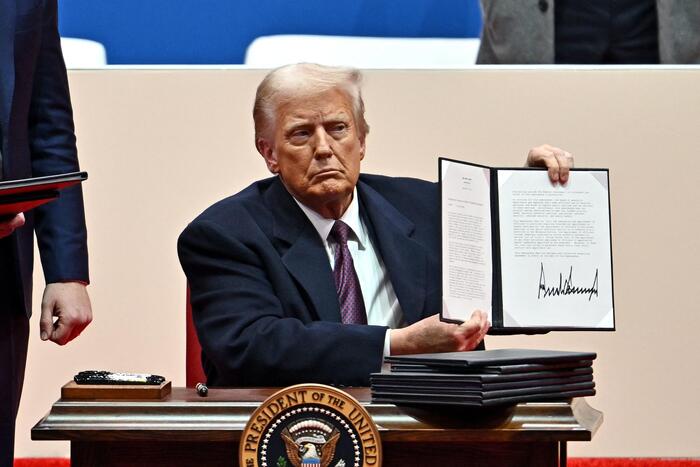“A driver who does not understand English will not drive a commercial vehicle in this country. Period,” Transportation Secretary Sean Duffy said Tuesday, announcing a new executive order from President Trump that tightens language requirements for commercial truck drivers.
The order, which takes effect Wednesday, empowers law enforcement officers to suspend drivers who fail on-the-spot English tests during routine inspections or traffic stops. While the directive outlines broad enforcement powers, it provides few specifics on how language proficiency will be evaluated—raising concerns over the potential for inconsistent or arbitrary enforcement.
According to the Department of Transportation, officers may question drivers in English or ask them to interpret road signs in order to assess whether they understand basic transportation-related information. Those who cannot respond adequately will be placed “out of service” on the spot. Their employer must then demonstrate that the language deficiency has been addressed before the driver can return to duty.
The mandate marks a sharp escalation in an area already covered by existing regulations. Under current federal law, applicants for a commercial driver’s license (CDL) must pass a written exam and demonstrate familiarity with vehicle mechanics, safety protocols, and road signage—requirements that include a functional command of English. An Obama-era regulation that went into effect in 2016 imposed fines on carriers whose drivers failed to meet those standards.
Critics argue the latest order is more about political messaging than public safety. “This is clearly a propaganda move,” said one industry representative, noting that the core language requirements haven’t changed—only the penalties and visibility have.
Still, the announcement has sent ripples through the trucking community, where demand for language instruction is surging. “Everyone knows what a stop sign means,” said the director of a nonprofit offering free English courses to truckers. “But if there’s a construction zone five miles ahead and the sign reads ‘Caution, exit required, road closed ahead,’ and you can’t read it—that’s a safety risk.”










